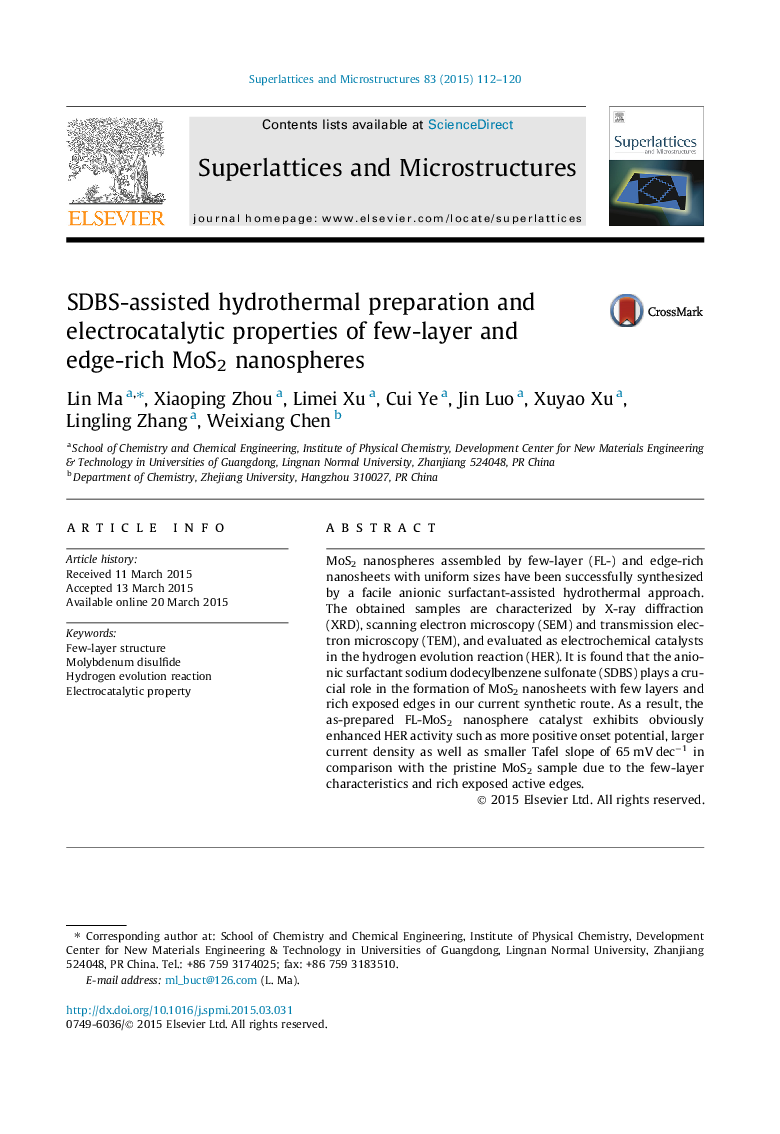| Article ID | Journal | Published Year | Pages | File Type |
|---|---|---|---|---|
| 1553111 | Superlattices and Microstructures | 2015 | 9 Pages |
•MoS2 nanospheres have been prepared by a SDBS-assisted hydrothermal method.•The MoS2 nanospheres are assembled by nanosheets with few-layer and edge-rich features.•The MoS2 nanospheres demonstrate enhanced electrocatalytic activity for HER.
MoS2 nanospheres assembled by few-layer (FL-) and edge-rich nanosheets with uniform sizes have been successfully synthesized by a facile anionic surfactant-assisted hydrothermal approach. The obtained samples are characterized by X-ray diffraction (XRD), scanning electron microscopy (SEM) and transmission electron microscopy (TEM), and evaluated as electrochemical catalysts in the hydrogen evolution reaction (HER). It is found that the anionic surfactant sodium dodecylbenzene sulfonate (SDBS) plays a crucial role in the formation of MoS2 nanosheets with few layers and rich exposed edges in our current synthetic route. As a result, the as-prepared FL-MoS2 nanosphere catalyst exhibits obviously enhanced HER activity such as more positive onset potential, larger current density as well as smaller Tafel slope of 65 mV dec−1 in comparison with the pristine MoS2 sample due to the few-layer characteristics and rich exposed active edges.
Graphical abstractTypical HRTEM image of FL-MoS2 nanosphere via a SDBS-assisted hydrothermal route.Figure optionsDownload full-size imageDownload as PowerPoint slide
